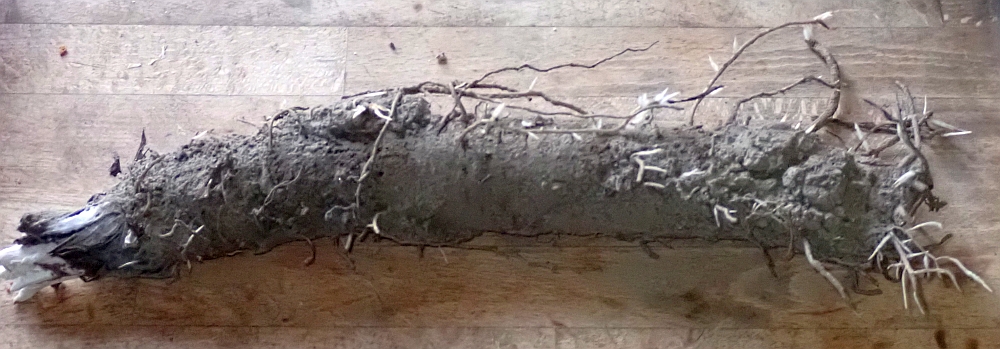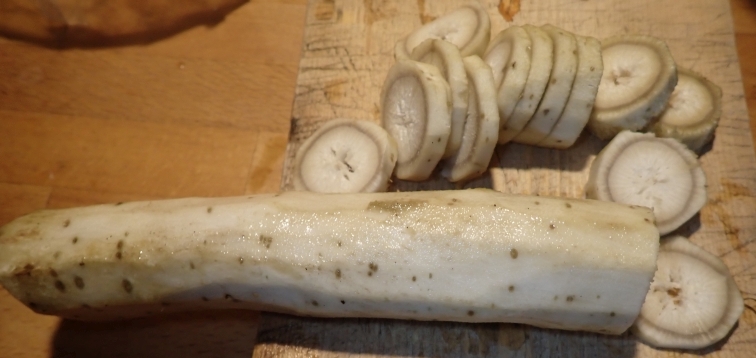After many years of trying, I managed to get a decent crop of dried runner beans / løpebønner* (Phaseolus coccineus). My own garden is a bit too cold due to the shady conditions on a rather windy spot. Last year I grew a selection of 15-20 early varieties sourced from the German gene bank IPK Gatersleben and commercial suppliers which I grew successfully in the sunnier community garden (Væres Venner).
They were made into delicious falafels, accompanied by living room grown Kandahar cress (karse) and wild buckwheat / vill bokhvete and turned into gourmet food with a couple of dandelion flowers from the windowsill!
*In Norwegian, these beans are known usually as blomsterbønner (flower beans) and most often used as an ornamental. I prefer to call them løpebønner to better reflect that these are much more than an ornamental!
Monthly Archives: March 2024
Root hairs and burdock
I used some burdock / borre root (Arctium lappa) in an oriental stir-fry the other day. They’ve been stored in autumn leaves in the cold cellar since autumn and now with the temperature increasing, the roots had developed many white root hairs. Their function is to dramatically increase the root surface area and hence interface with the soil, and hence enhancing the absorption of water and minerals.


Hablitzia beginnings
The video can be seen here: HABLITZIA BEGINNINGS
First Chaffinch
With relatively warm weather continuing, it was nice to hear an early chaffinch (bokfink) in full song this morning in the garden. You can also hear an unusual breeder, coal tit (svartmeis) and one of several great tit (kjøttmeis) pairs defending territories at the moment in the garden; the coal tit is singing (higher pitch) from the top of one of the spruce trees.
Living room veggies; March 2024
Somebody asked me to show how I force veggies indoors in winter, so here you have a link to a short video showing what is available at the moment!
At this time of year, most of our leafy greens used in salads and cooking are either harvested from the forcing pots shown in the video or directly from the cold cellar under the house. Here is a mixture of perennials, biennials and annuals. Still looking for a good perennial chicory for forcing. See the list of plants shown below.
Follow the link to the video.
Witloof Festive Chicory (sikori / julesalat)
Witloof Væres Venner mix (my own selection from the community garden based on several varieties from various gene banks)
Hristo’s onion (Allium flavescens x nutans?)
Kandahar cress (karse) from the Experimental Farm Network (seed harvested in the community garden)
Wild buckwheat / vill bokhvete (seed harvested in The Edible Garden) Garlic bulbil sprouts / spirte hvitløk bulbiller
Nodding onion / prærieløk (Allium cernuum)
Dandelion / løvetann
